Fixed and Handheld RFID ReadersHand-Picked for your Needs
State-of-the-Art RFID Readers and Antennas
What is an RFID Reader?
An RFID reader is the CPU of the RFID system and is necessary for the RFID tracking system to function. RFID readers transmit and receive radio waves to communicate with RFID tags. RFID reader types can be broadly classified into Fixed RFID readers and Mobile RFID readers.
Fixed RFID Readers
Fixed readers are affixed in a location and are typically mounted on walls, ceilings, into portals and other 'choke points', such that RFID tagged assets can be monitored as they go by.
Fixed RFID readers can further be classified into Distributed readers and Integrated readers.
Distributed fixed readers comprises of 3 important components:
- RFID Readers
- RFID Antennas
- RFID Antenna Cables
Distributed fixed RFID readers contain external antenna ports that can connect anywhere from one additional antenna to four different antennas. By using an antenna hub/multiplexer, readers can connect to up to 32 RFID antennas. The number of antennas connected to one RFID reader depends on the use case requirement. In the cases of AssetGather Check-in / Check-out solution, the requirement is a small area of coverage, so one antenna will suffice. On the other hand, if it is required to track a manufacturing production line, more than 20 antennas would be required to provide asset tracking granularity at the work bench/shelf level.
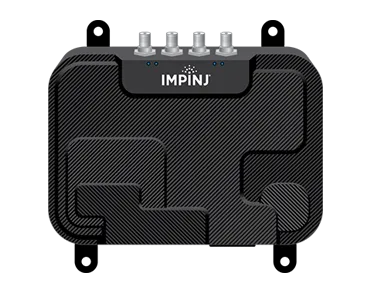
An Integrated fixed RFID reader is a reader that has built-in antenna and therefore RFID antenna cables are not required.
Integrated readers are easier to deploy and are usually aesthetically pleasing since the number of hardware components required is very minimal. They can be used for applications where assets move in a predefined, consistent manner.
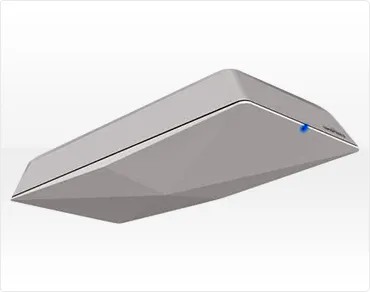
Mobile RFID Readers
Mobile RFID readers also called as handheld RFID readers are handheld devices that are used for scanning/reading RFID tags and they communicate with an onboard computer or smart device.
Two primary categories of handheld RFID readers are:
- Mobile Computing Devices or Integrated Handheld Reader.
- Sled Readers
Mobile Computing Devices are readers with an onboard computer.
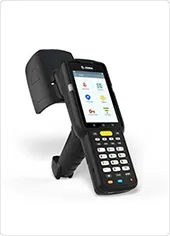
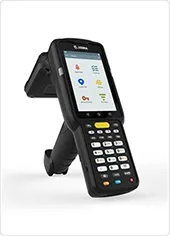
Sled readers use Bluetooth or Auxiliary connection to a smart phone or tablet.
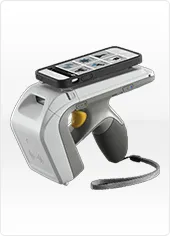
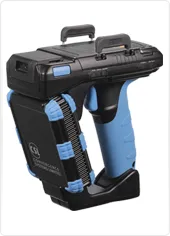
Classification of RFID Readers
RFID readers are classified based on:
- Operating frequency
- Connectivity
- Processing capabilities
- Power options
- Number of antenna ports
What is an RFID Antenna?
RFID antennas are transceivers that transform the RFID reader's signal into RF waves, which are picked up by RFID tags and in turn receive the backscattered RF waves from all RFID tags in the vicinity and transmit back to the RFID reader.
Unlike RFID readers, RFID antennas are just simple transceivers without any processing capabilities. When the reader's energy is transferred to the antenna, the antenna generates an RF field, which then transmits an RF signal to the nearby tags.
There are different types of antennas that are based on:
- Form Factor
- Operating frequency
- Ruggedness
- Polarization
- Mounting options
- Antenna gain
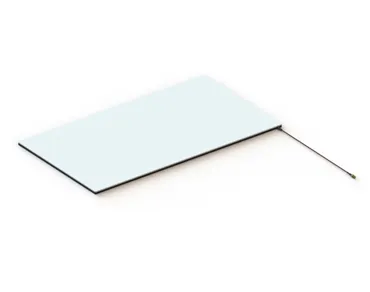
An antenna with higher gain is more powerful and produces a further-reaching RF field.
RFID antennas that radiate RF waves along horizontal or vertical plane are linearly polarized antennas. If the RF field is in a horizontal plane, it is described as horizontally linear polarized, and similarly an RFID antenna that creates a vertical plane is described as vertically polarized.
A circularly-polarized antenna transmits horizontal and vertical planes alternately, in order to offer flexibility, by allowing RFID tags to be read in multiple orientations. Since the RF energy is split between two planes, a circularly-polarized antenna's read range is shorter in comparison with a similar gain linearly-polarized antenna.
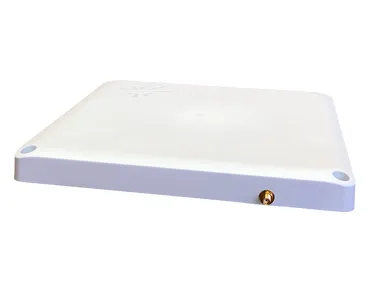
RFID Antenna Cables
RFID antenna cables are used to connect the RFID reader to RFID antennas. RFID cables are classified based on the type of connectors at either end of the cable, length of the cable and thickness of the cable.
The cable length and thickness (also known as insulation rating) varies depending on the requirement for a specific customer use case. Length of the cable is typically determined by the distance between RFID reader and RFID antenna. However, it is important to note that with increase in length, power loss also increases proportionally.
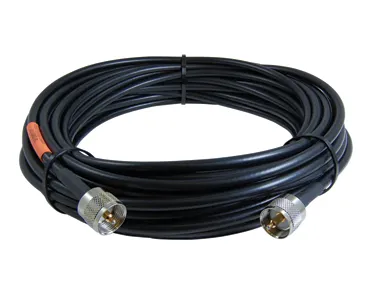
Power loss can be addressed by higher insulation rating. The longer the length of the cable, the better insulated the cable must be, in order to manage the amount of power lost due to the length of the cable. However, as insulation rating increases, the cable becomes thicker and also rigid. This makes deployment challenging as the cable is more difficult to bend and work with, when turning corners or running through conduits.